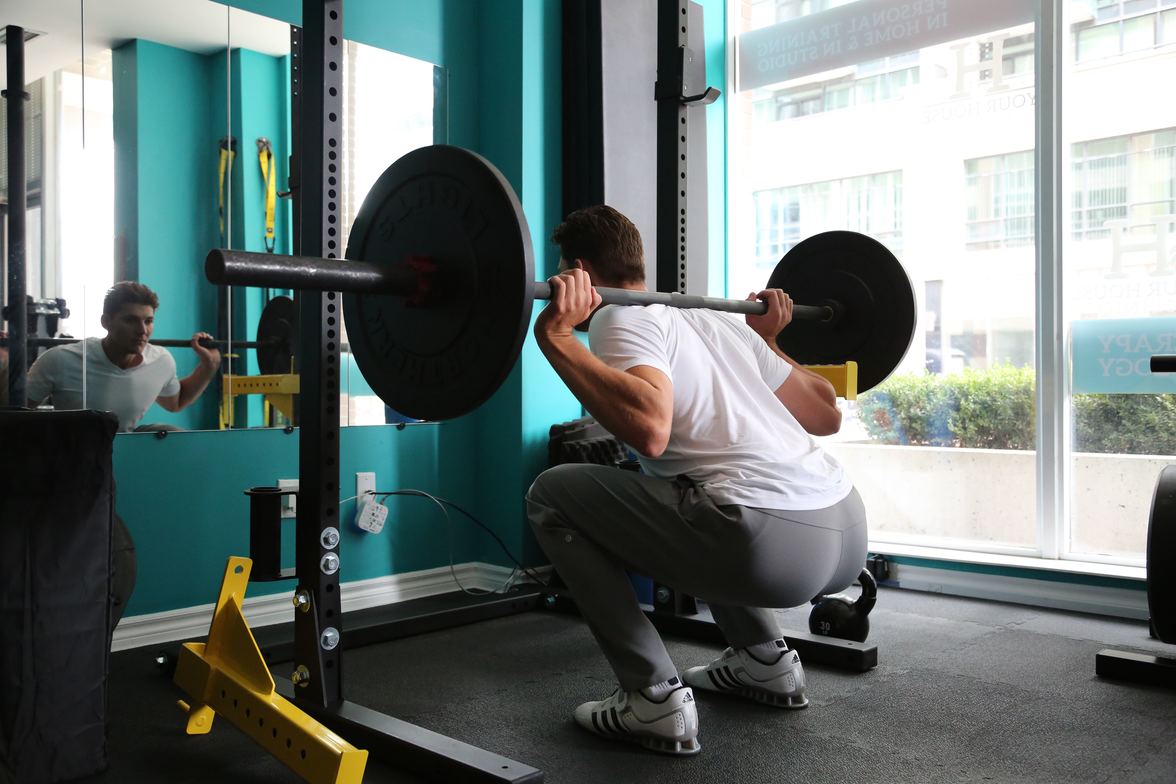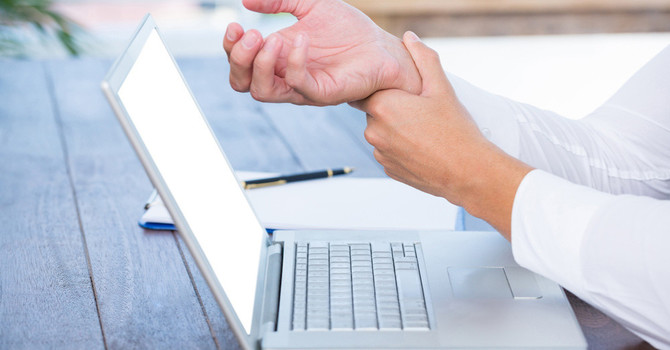
The Dead Butt Syndrome: Podcast Transcript
Hey, desk jockeys. It’s Dr. Kevin Christie with another episode of the Modern Desk Jockey. Welcome to today’s show. I’m excited about it because we’re going to talk about the dead butt syndrome and I know many of you are probably wondering what the heck that is and where am I going with this, but you’ll see it’s all too common. We see it a lot, but there are some easy solutions for it. So bear with me as we jump into that show3, but before we do, I wanted to share a piece of exciting news on our end as far as the corporate wellness that we are doing. In April we will be launching an on-site active release technique. That’s through active release technique corporate solutions. Two of our doctors are certified in that technique as an elite provider, and this particular company will be having us on for a couple of times, a couple of hours per week doing only active release technique to prevent some of the health related, or I should say work-related health issues. So we will be launching that on April 4. That was a big win for us, and we just found out about that, so that’s exciting. Starting to grow, which is always a good thing. If you wanted to contact me for anything, if you’re listening to this show and you have any questions, again you can always reach me at Kevin@ModernDeskJockey.com. So let’s jump into this show, the dead butt syndrome, otherwise known as Gluteus Medius Syndrome.
How to Diagnose Dead Butt Syndrome (Gluteus Medius Syndrome)
Really with a fancy term for the diagnosis, the scientific term is the gluteus medius syndrome and essentially what it is is a nasty trigger point in the glute medius muscle, you know the glutes, and it causes a lot of pain there. Sometimes, unfortunately, it gets misdiagnosed, or I should say a blanket diagnosis of hip bursitis or some people will just throw things out there like Piriformis Syndrome which is a condition, but dead butt syndrome or the gluteus medius syndrome is different from that, and so it’s a really good nasty trigger point there that causes pain. Sometimes it’s only localized. You can pinpoint it, or it sometimes will refer down the glute and even to the hamstring side of the hip, down the lateral aspect of the leg, and it sometimes manifests itself into other conditions, which we will discuss, but that’s the description of it. We see this happen in all kinds of people. Really what ends up being the issue is usually, so let’s back up a little bit.
Two of the requirements during walking, during running, during sports, during any activity and again this can happen just walking. If you don’t do any activities and you sit for a living, you are obviously, for the most part, if you are ambulatory, you’re walking a period of your day, and that requirement takes two things. I mean, there’s many things, but as far as the hip. One is hip extensions. That’s extending the hip back, you know bringing the leg back as you walk or run and then the second is hip stability during a one-leg stance or during say that push off phase of walking. There’s hip stability that happens there.
Usually, when we see someone lacking hip stability they’ll have sort of a sway to their walk, like a hip drop and you can see it’s pretty evident in runners that have a lack of hip stability, but you can even see it in walkers as well. And so what ends up happening during those two movements, hip extension or hip, one leg stance I should say, it requires a lot of work from the glutes, the glute max, the glute medius, the TFL muscle, which I’ll break down in a minute. It is all working to help try to stabilize that pelvis and extend the hip. What ends up happening is if our glutes aren’t functioning right and again the glutes are a muscle that tends to become weak on people as we become more sedentary. It tends to become weak so when that does happen, it leaves that kind of muscular imbalance, and you end up maybe when you extend your hip, you use the hamstring too much, or you arch your low back too much and you kind of chew up your low back and so you’re not getting the proper hip extension from the glutes and that can lead to a lot of issues as well as over use of that muscle.

The second thing is when you’re walking, and you’re supposed to have proper hip stability, again walking, running, sport, all kinds of things, if the hip isn’t if the glute medius is not functioning correctly and is not activating right, you’re going to get the TFL over working. You’re going to get all these other compensatory muscles trying to do the job of hip stabilization, and it can’t happen. So what ends up happening is the glute medius tends to become weak, and the TFL muscle or the tensor fasciae latae tend to become tight. This poses quite a bit of a problem. That can hold steady for a little bit, and you know it becomes this over use cycle that maybe doesn’t manifest itself into pain right away, but at some point, it will and so now to give you an idea of the musculature so you can visualize this.
The best way I can tell you through audio with no visual is picture say a female in a bikini, and you’ve got the muscles, you’ve got the glute max and then you’ve got the glute medius and the TFL and then you have to say on the side of the hip the dimpling down, that’s where the glute max and then the glute medius and then the TFL form that type of area. So it’s right there on the side of the hip. The TFL is a little more forward. It sits like a fist about the size of a fist more on the forward part of the side of the hip, where the glute medius is more towards the back part. So that’s the musculature, and then the IT band runs from the TFL all the way down the side of your thigh down to your knee, and that’s why a lot of runners get IT band syndrome. One of the biggest causes is a lack of hip stability. So where that TFL and that glute medius is, where I mentioned, if that’s where you’re getting some of those nasty trigger points or pain, a lot of times that’s that glute medius syndrome or even an IT band syndrome representing itself at that hip. And so if you’re having those issues, that’s most likely what you have going on and when that glute isn’t working, that TFL is going to tend to become tighter and tighter and tighter and the glute medius will tend to become weaker and weaker and weaker.
I mentioned on previous podcasts that every muscle in your body either tends to become tight, or it tends to become weak, and so in that type of categorization, the glutes then become weak, and the TFL and the hamstrings and the low back tend to become tight. So when you have this physical manifestation is manifesting itself, you’re going to cause this pretty significant muscular imbalance, and with the repetitve injury cycle or the over-use injury cycle, I’m going to break that down.
So if we start with the muscular imbalance I just mentioned, what’s going to end up happening is you’re going to end up developing friction, pressure or tension in the area. In this case, you’re going to get a lot of kind of friction and tension in that glute medius and even the TFL, and that’s going to go on for awhile, but that’s going to cause a lack of actual blood flow to the area. Blood flow is the key to healing anything, and when you start developing a lack of blood flow and therefore lack of oxygen to the area, which is a common over use principle, the body is going to start laying down scar tissue or adhesion, whatever word you want to use and when that happens, that really becomes the formation of that trigger point and then when you develop say a trigger point in the glute medius, you’re going to then cause that glute medius to become weaker. If a muscle gets riddled with scar tissue or trigger points, it’s going to hasten then the process of going towards either that tightness that it tends towards or that weakness that it tends towards.
So with the glute medius, it’s going to tend to become weaker, and when that glute medius gets weaker, the TFL is then going to become tighter because it’s overworked because when you’re walking or running or doing anything, the glutes not doing its job and so the muscles around it try to over work to help out, but they can only do that for so long before finally as the cycle is going around and around and it can be days, months, years going into this cycle and finally the straw that breaks the camel’s back, which is pain, the alarm system is sent out into pain. Now you have said the condition of dead butt syndrome, and so you have this nasty trigger point there and so every time you walk or run or whatever, you’re having a lot of pain, and it’s very frustrating for people, and they don’t know what to do. Unfortunately, they just get diagnosed with a hip bursitis or something that’s not correlating to that, and they don’t get any solution toward like manual therapy or anything. So it becomes a problem. So that’s, you know, the dead butt syndrome, that’s how it’s caused. That’s the muscular imbalance presentation of it. That’s everything you need to know as far as what it is and how it happens.
Now, what can you do for it? One of the things I would first do as long as you’re not having too much pain is seen how your hip balance is just, and try to stand in front of a mirror, sternum out, standing nice and tall and then do it on both legs and I want you just to raise the hip and stand on one leg with your arms to the side. Don’t get any false balance by putting your arms out like an airplane and just try to stand nice and tall with one leg and see if you can do that with your eyes open for 30 seconds without losing your balance or shaking everywhere or dropping a hip down, like all the compensations that happen. See if you can do that easily for 30 seconds. You’ll start to feel that hip kind of wake up as well and then do it on the other side. If you don’t pass that, then you have some hip stability issues, and you need to work on that. I will put some stuff in the show notes, some exercises that you can do for that.
The second test if you do okay with the 30 seconds and again there’s a lot of tests you can do, but in the self-test standpoint I’m just going to go over a couple. If you pass the 30 seconds, then do it with your eyes closed because you have two balance centers. One is your visual and one is your spinal reflexes, and when you close your eyes, you’re taking out the visual balance, and you only have your spinal reflexes, and so it’s going to be a little bit harder to balance on that, but if you got good reflexes and stability, you should be able to do it. I show this test all the time in the office, so I’ve become very good at it. You know, when you lose your visual component of the balance, and you’re just working on the spinal reflexes of it, that’s kind of what happens when you say sobriety tests and drinking because when you drink, you affect the cerebellum and that’s where your visual balance center is as well.
So it’s the same type of deal, and that’s why balance can be tough when we drink. So see if you can do that and if you can’t, you’ve got to work on it. We’ll go over some exercises you can do. Glute bridges are great. Single leg stands, single leg squat with assistance is really good. Stiff leg and deadlift with light weight are really good, and again I’ll put these in the show notes for you. I’ll put some resources, but that would be the first test to see if it’s an issue and then those are some of the corrections you can do. Just don’t over do it. Treatment options such as active release technique, which I mentioned in the introduction is soft tissue fascial release therapy, massage, chiropractic, all of those things, physical therapy can be very helpful. I do believe that if you have this, manual therapy of some sort is really what’s going to help get rid of it and then from there, you’re going to need some corrective exercises to make sure you wake up those glutes and that they’re functioning so that you’re not dealing with this issue again.
That’s the dead butt syndrome. That’s what it is, how it happens, how to test for it from a cause-effect and obviously some treatment options and corrective exercises. It’s always recommended to see a doctor if you have this, if you think you have this or if you’re having some red flag type pain with it, but that is a very common, very common condition we see. Especially desk workers because we’re sitting so much. We’re sitting on our butts, and they are getting deconditioned and then even if we’re active, we then carry those deconditioned glutes into our activities, and it’s causing a lot of problems.
That’s it for today’s episode. I hope you enjoyed it and I will see you next week. Have a great one!



